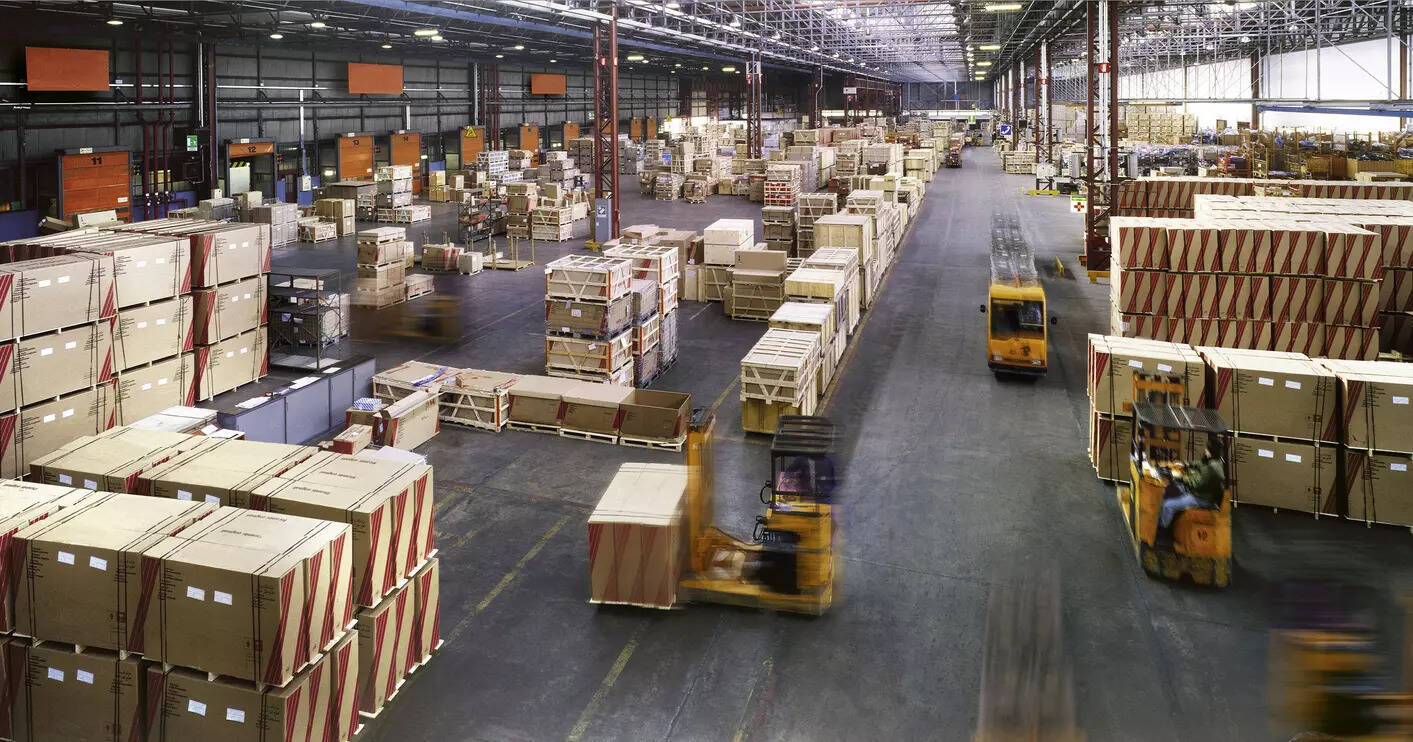
Upbeat economic growth and the government’s focus on building highways and improving logistics are driving growth in India’s warehousing sector. Blackstone Inc. plans to more than double its holdings of Indian warehouses and may eventually take the logistics business public, Bloomberg has reported. The New York-based firm may boost the warehouse space to at least 100 million square feet in India in two to three years. Blackstone would eventually look to raise money from the booming business through a large strategic sale or public offering in the next 12 to 24 months.
Blackstone is not alone in betting big on the booming warehousing sector. Last year, global logistics operator DP World opened its 3.80-lakh sq ft warehousing facility at Bhiwandi, in Maharashtra, to cater to businesses in segments such as agriculture, pharmaceuticals, electric vehicles, and chemicals. The warehouse expanded DP World’s total warehousing space to over 5-million sq-ft pan-India.
In the largest ever warehousing space picked up by an Indian footwear company, Metro Brands Ltd last month leased a built-to-suit 3.25 lakh sq ft warehousing space in Bhiwandi as the company is looking to expand its operations. Last month, food delivery startup Zomato has signed a lease agreement for a 300,000-sq ft built-to-suit warehouse that will come up in Bengaluru’s Sumadhura Logistics Park. It will be Zomato’s largest built-to-suit warehousing space in the country.
Total warehouse leasing in 2023 stood at 38.8 million square feet across eight cities, CBRE said in a report. Manesar and Greater Noida in the NCR and Maharashtra Industrial Development Corporation (MIDC) in Thane are among the costliest locations to acquire land for building a warehouse, with prices ranging from INR 15-30 crore per acre, compared to the average price of INR 2-5 crore per acre in other top markets in the country, according to CBRE.
During the year, warehouse leasing was predominantly steered by third-party logistics firms with a combined market share of about 45%. Within this sector, occupants from diverse industries such as ecommerce, retail, and manufacturing chose to outsource their supply chain operations to these firms.
India’s modern warehouse infrastructure sector has witnessed massive investment flows from global investors – $10 billion plus in the last 10 years alone, ET had reported last year in September. The segment has seen some large funds and real estate players, including Panattoni, Investcorp-NDR Group, RMZ, Hiranandani-Blackstone, Actis, Assetz Property, Ivanhoe Cambridge, and Prologis, looking for significant expansion in the industrial and warehousing space.
Why are so many warehouses cropping up?
Behind the warehouse boom is India’s robust economic growth and the government’s focus on logistics and infrastructure as well as India’s strengthening consumption story.
Conferring the ‘Infrastructure’ status to the logistics and warehousing sector, the rapid expansion of new-age sectors like e-commerce and allied services, the growing needs of the massive consumption market, and the government’s focus on making India as a manufacturing hub has resulted in a steep uptick in warehousing demand. Moreover, there is a growing preference by the occupiers for Grade A, ESG-compliant warehouses with modern storage solutions.
3PL (third-party logistics) firms dominate the warehousing market, holding 41% of the lease volume, followed by engineering and manufacturing (E&M) at 28%.In contrast, the automotive and electronics sectors accounted for a large 45% of leasing activity in the field of industrial leasing.
“ICRA anticipates the credit profile of the warehousing players to remain Stable. The occupancy levels are likely to remain high at 95% in FY2025, driven by e-commerce, 3PL and manufacturing-led demand. The rental income and the NOI are expected to grow by ~30-32% in FY2025, supported by the commencement of rentals from newly added capacities and scheduled rental escalations,” Anupama Reddy, VP and Co-Group Head, Corporate Ratings, ICRA, said.
In 2024, warehouses are set to draw substantial investor capital due to rising demand from manufacturers and third-party logistics (3PL) companies, with Cushman and Wakefield projecting the leasing of over 50 million square feet of grade A warehouses across the top 8 cities, crossing 2023’s estimate of 45–50 million square feet.
Demand high in smaller cities
Tier-II cities are becoming a new hub for warehouses with world-class integrated logistics parks backed by institutional funds being developed in addition to new industrial parks backed by the state governments and leasing of contiguous space in investment-grade facilities by multinational companies, ET reported last month.
In 2023, over 5 million sq ft warehousing space was taken by companies in tier II cities like Lucknow, Chandigarh, Nashik, Hosur and Coimbatore, which are emerging as the central industrial corridors, with Indore, Chandigarh, Coimbatore, Lucknow, Nashik and Jaipur airports being equipped with cargo handling units.
“Improved connectivity and infrastructure, coupled with the surging e-commerce boom, have made tier II and III cities increasingly attractive. The country’s strong consumption story from the non-metro cities, same-day deliveries and deepening internet penetration shaping digital buying decisions have further amplified the growth of warehousing facilities in these markets,” said Anshuman Magazine, Chairman & CEO, India, Southeast Asia, Middle East & Africa, CBRE.

